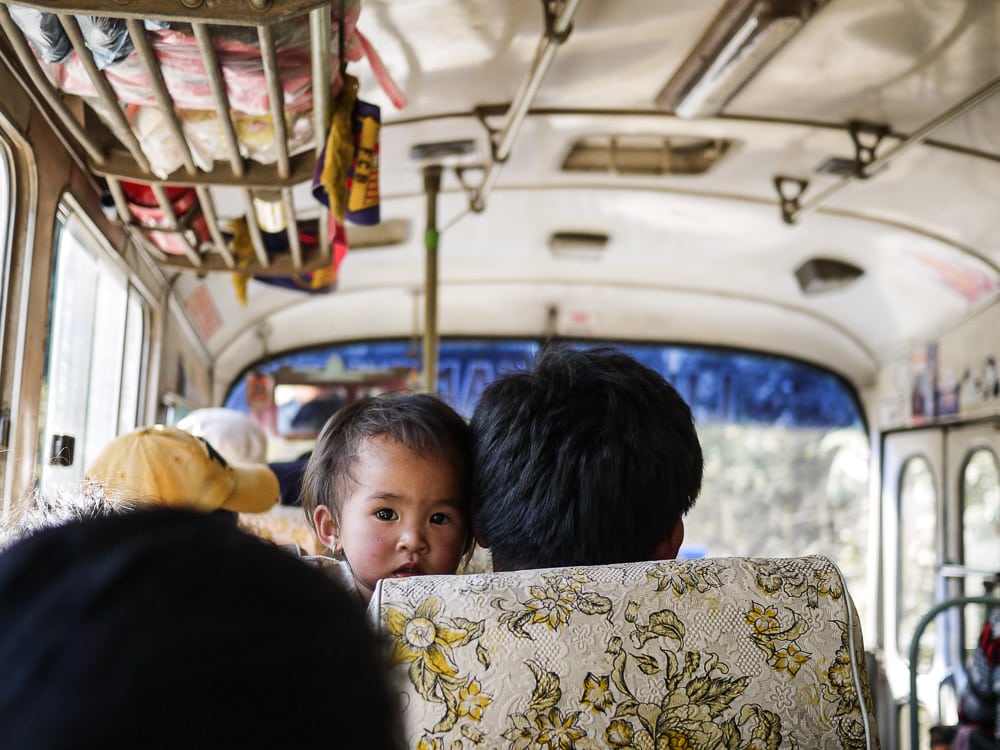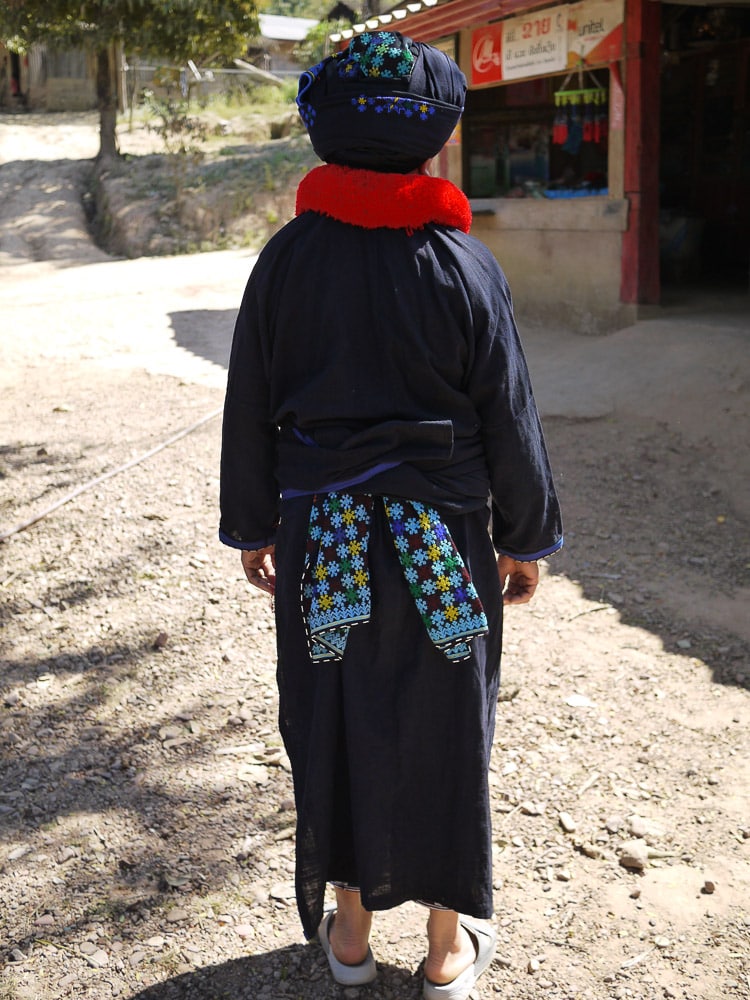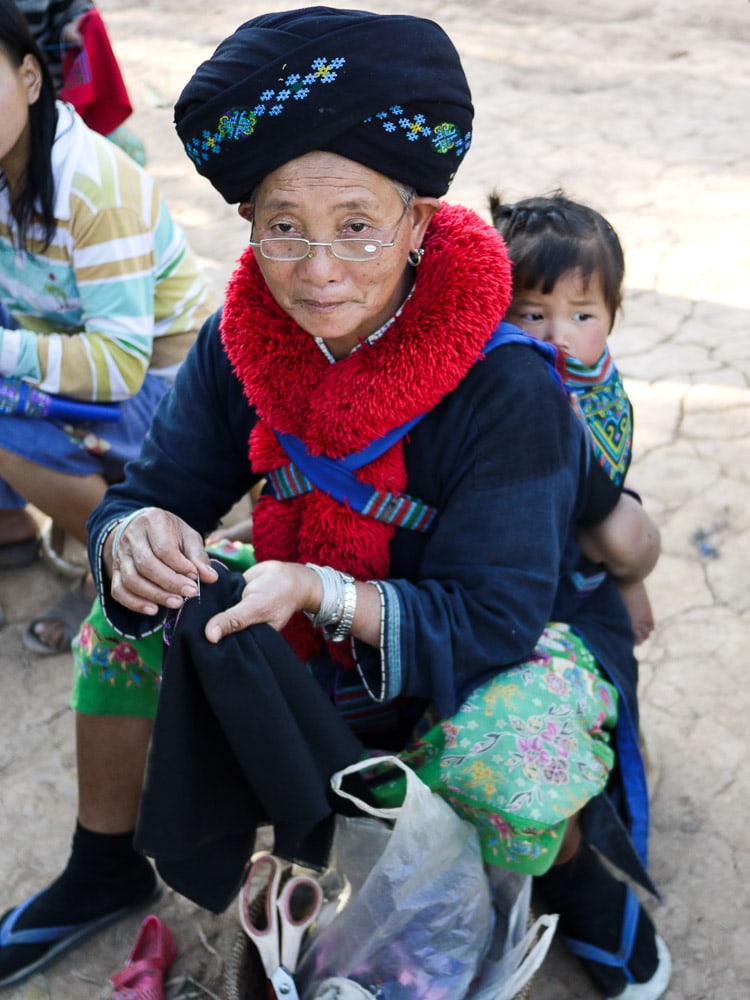The first time that I met embroiderer Famjoy Sealee was in 2012: She had traveled a great distance from her small village in Northern Laos to Santa Fe, New Mexico in America’s desert Southwest. We were there to attend the Santa Fe International Folk Art Market with Khoun Soutthivilay from the Traditional Arts and Ethnology Centre, a small cultural museum based in Luang Prabang, Laos.
Famjoy belongs to the Yao Mien ethnic group which is known for their intricate embroidery and traditional dress. They are ethnically Chinese dating back 2,000 to Hunan province. Today, Yao people can be found today in China, Laos, Thailand and Vietnam.


In 2013, I moved from New York City to Luang Prabang for a year to support the Traditional Arts and Ethnology Centre as a volunteer design consultant. As my time there was drawing to a close, I wanted to see Famjoy and her village located near the small city of Muang Sing close to the border of China.
My solo journey started at the bus station in Luang Prababg and lasted nine hours as our ride chugged up and over bumpy mountain roads rumored to have been built by American soldiers during the Vietnam war. Today, the same roads transport Chinese tour buses and large logging trucks that frequently tip over, spill their load of logs, and block the road. Despite several delays, our little bus marked 'LUANG NAMTHA' carried on full of life; there were noisy chickens aboard and humans of all ages. We looked out our windows and admired shimmering green rice paddies and the mountains that define this rural landscape.





We reached Laung Namtha at nighttime and I was relieved to find a guest house after the town had gone to sleep. In the morning over a breakfast of bread and jam, I met Akha people selling bracelets to tourists. Akha women are known for their elaborately embellished headdresses that make them one of the most recognizable ethnic minority groups in Laos.
I made my way to Muang Sing where I was scheduled to meet Famjoy's son. We greeted each other with a 'Sabaidee' and I hopped on the back of his motorbike. We drove down dirt roads past sugarcane fields and small communities embedded into the land. I knew the ride was over when we pulled into a village and I saw black and red Yao Mein traditional dress just like Famjoy's.




As I caught sight of Famjoy sitting under a sign that read 'HANDICRAFTS STORE', she looked up at me from the small, low stool where she does her work. Putting it down, she greeted me warmly and I followed her inside her family home. It was dark inside to keep it cool. She gestured for me to sit down on a similarly low stool as dish after dish of food filled the low round table in front of me. Soon, we were all feasting on local vegetables, fish, and sticky rice that we pinched into balls and dipped into jaew sauce.
Famjoy and I share very little common language but words weren't necessary. After lunch, she handed me garment after garment signaling me to try it on. I felt honored to be her guest as she wrapped my head with an embroidered black turban. Famjoy got dressed in new and old pieces, too, and we modeled for the camera.









As we sat and talked, her son asked me questions like: "Can you show us the photos on your camera?" and "How much does a Ford truck cost in America?" He took me on a walk around the village and I admired the quiet way people divided their time between farming, handicraft work, and taking care of their families.
Yao Mein women wrap their babies to their bodies with intricately decorated cloth. These baby carriers have corded edges, embroidery, applique, and silver trims. In addition to embroidered turbans, pants, red-trimmed jackets, and baby carriers, Yao people in Laos also make baby hats. The design differs for boy and girl babies denoting the sex of the child.
Each of these pieces is a labor of love that takes several months to complete.










